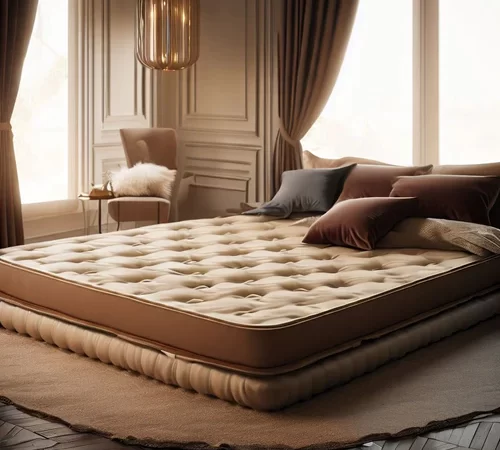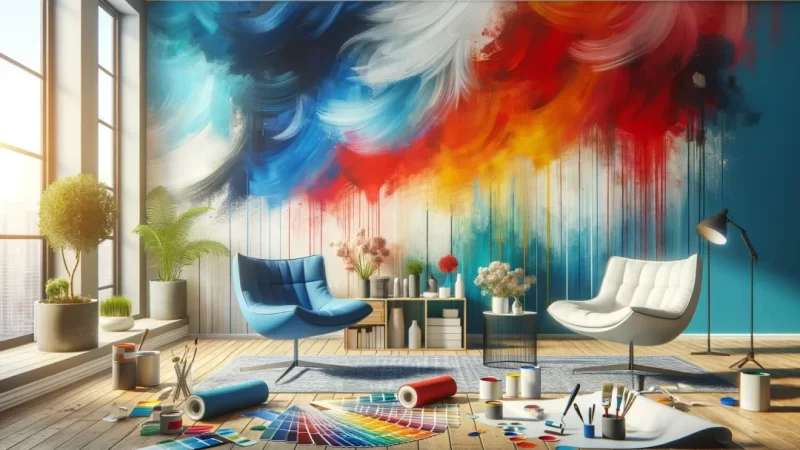Mixing Materials: Creating Texture in Interior Design

Interior design is an artistic combination of components that extends beyond colour and shape. Adding texture to a space gives depth, visual intrigue, and a tactile element that improves the overall aesthetic. One effective method for accomplishing this is to blend components strategically. In this post, we’ll look at the technique of blending materials to produce texture in interior design, which is perfected by professional interior designers.
Understanding Texture: The Sensory Dimension
Texture stimulates both the visual and tactile senses, adding to the overall richness of a place. In interior design, texture refers not only to how surfaces seem but also to how they feel. A well-textured setting is welcoming, vibrant, and offers a sensory experience that is beyond the norm.
Different textures can affect how we see a room. Smooth surfaces provide an impression of modernism and cleanliness, whilst rough textures give warmth and character. Understanding the psychological influence of textures is an important ability that interior designers use to create places with deliberate atmospheres.
Materials as Texture: A Variety of Possibilities
Wood is a versatile material that adds warmth and timelessness to a place. Whether it’s hardwood flooring, wooden furniture, or ornamental elements, the natural textures and variances in wood offer a tactile character that is pleasing to both eye and touch. Interior designers frequently employ wood to counterbalance sleeker, more contemporary materials, resulting in a harmonic contrast.
Metallic surfaces add a sense of industrial elegance and refinement. Metals add shiny surfaces that catch the light to everything from kitchen equipment to brass or copper accents in living rooms. This not only provides visual appeal but also generates a play of shadows and brightness, which improves the overall texture of the room.
Textiles and Fabrics: Softness and Comfort
Textiles and fabrics add to the softness and cosiness of a room. The combination of a velvety couch, rich draperies, and tactile throws adds levels of texture. Interior designers experiment with various fabric patterns and weaves to provide visual interest while ensuring that the textiles match the overall design plan.
Rugs and carpets not only bring warmth to a room, but they help anchor the design. The texture underfoot is affected by the materials used, whether they are natural fibres like jute or expensive choices like silk. Interior designers expertly arrange carpets to delineate distinct regions and increase the textural richness of a space.
Stone and Tile: Timeless Elegance
Natural stone, such as marble, granite, and slate, adds organic texture to interior spaces. From kitchen counters to bathroom surfaces, the distinct patterns and differences in stone provide a timeless and attractive textured backdrop. Interior designers frequently combine stone with softer materials to create a harmonious contrast.
Tiles provide several options for generating texture. This material gives visual appeal and depth to a variety of tiles, including delicate mosaics and large-format tiles with subtle patterns. Interior designers use tiles not only for practical functions in kitchens and bathrooms but also as design components to improve the overall appearance.
Combining Materials Harmoniously: A Balancing Act
The key to good texture blending is finding a perfect balance. Interior designers carefully choose materials that complement one another without dominating the room. The idea is to generate contrast while avoiding visual clutter. A smart use of materials adds intricacy to the design while maintaining cohesiveness.
Texture blending requires careful consideration of scale and proportion. Large-scale patterns or textures may dominate an area, with smaller-scale textures serving as accents. Interior designers carefully evaluate the size of materials to ensure that each texture adds to the overall design story in a balanced manner.
Lighting Effects: Enhanced Textural Dynamics
Lighting is an effective technique for highlighting texture. Interior designers employ lighting deliberately to create shadows and highlights that improve a space’s textural dynamics. Lighting is an important aspect of the textural story, whether it’s track lighting that highlights a textured wall or pendant lights that create fascinating shadows on textured flooring.
Transparent materials, such as glass or acrylic, offer another dimension to the textural interaction. These materials provide an impression of lightness and transparency while retaining their unique texture. Interior designers utilise translucent items to add focus points and visual appeal without overwhelming the overall design.
Conclusion
The technique of combining materials to produce texture in interior design is a well-honed expertise that turns places into immersive experiences. Skilled interior designers create a symphony of materials, blending the softness of fabrics with the strength of wood, the beauty of stone, and the reflected properties of metal. Consider the influence of texture on your space as you begin your design journey, and explore the limitless possibilities that result from smart material combinations.







